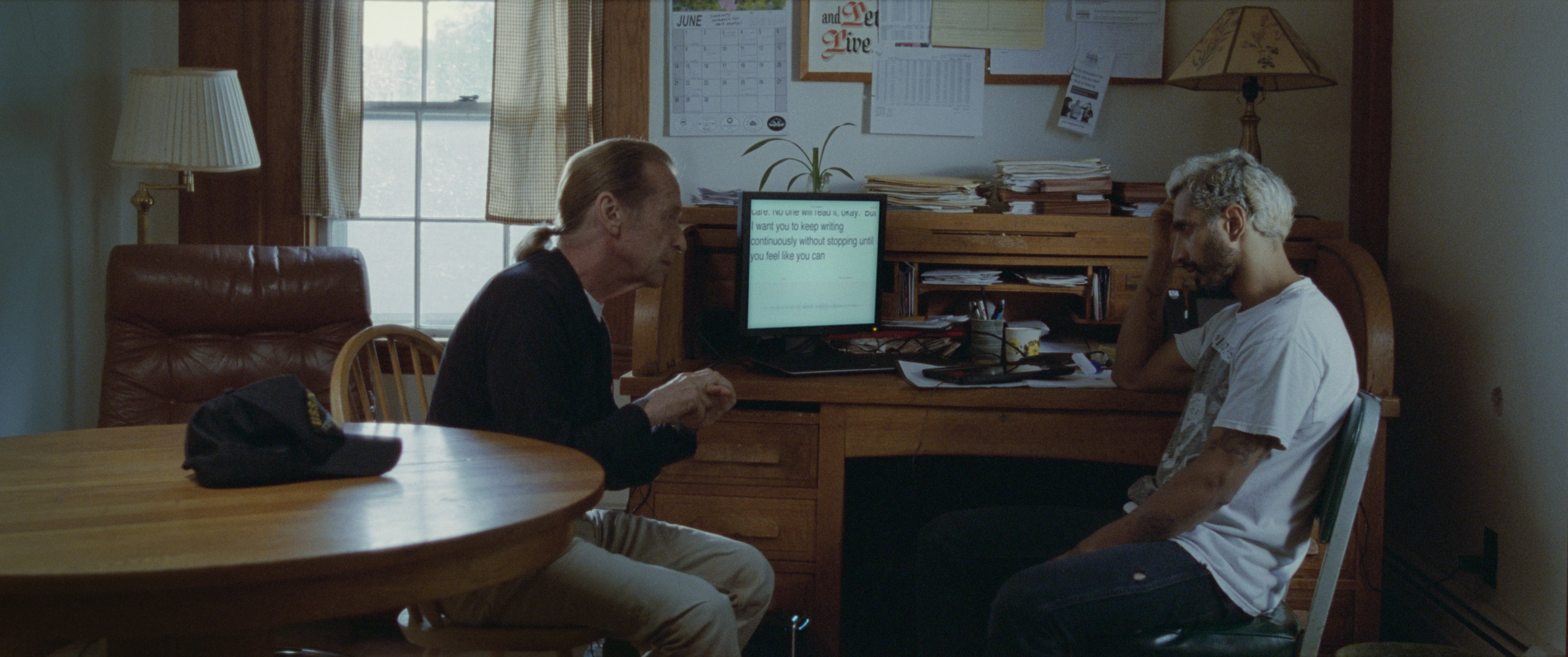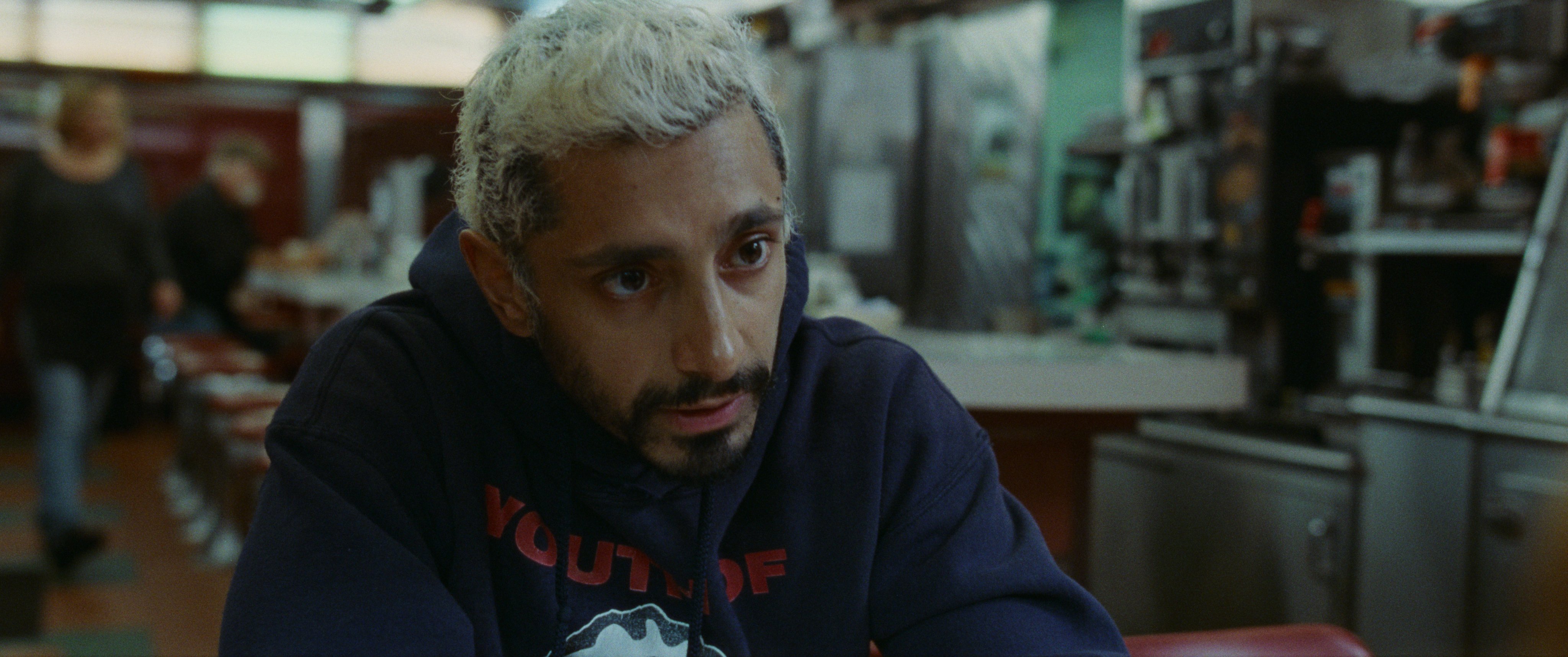Ruben Stone lives in an RV and travels the country performing alongside his girlfriend Lou. He is a recovering drug addict and music is his life – until he starts to lose his hearing. After meeting with a doctor, Ruben learns that his hearing will continue to deteriorate until he becomes completely deaf. This is the introductory plot of “Sound of Metal”.
In 2019, “Sound of Metal” debuted at the Toronto International Film Festival. In 2020, Amazon Studios released the film in theatres and on Prime Video. The production has received praise from across Hollywood for its acting and sound design. Throughout the production, Ruben joins a community of Deaf recovering addicts. He tries to accept his future and takes steps to learn sign language.
“Sound of Metal” sets an example for how Hollywood can approach the casting of Deaf characters, the use of sign language in movies, and even the development of captions for audiences. Here are a few key ways this movie hits the mark when portraying and including the Deaf community.
A person is never just deaf
Hollywood has a problem with how the Deaf community is depicted. Deaf characters are often poorly-written because their deafness is their main personality trait and plot driver. Not only is this lazy writing, but it can be an insult to the Deaf community who rarely see themselves portrayed in media.
With “Sound of Metal”, each character that is Deaf also has a backstory. They have families and life experiences. They have experienced pain and joy. They are more than their disability, which allows the actors to embrace their characters as real people.
“I’m Deaf. I’m queer. I grew up in a Deaf community…but the biggest difference was that I had never experienced addiction,” says Chelsea Lee, who plays Jenn, Ruben’s best friend in the recovery community. “I think addiction itself is an identity for folks, and we all have so many identities within our intersectional selves. And for me, as a Deaf person, I have experienced rejection, and I have experienced marginalization.”
Lee highlights how she is more than just a Deaf person or a queer individual. These are parts of who she is, but they don’t make up her entire being.
Another problem with writing Deaf characters with flat personalities is that they are often deified. The hearing community tends to place Deaf characters on a pedestal as heroes who suffer in silence and overcome challenges every day. The reality is that being Deaf doesn’t inherently make you a good person or a bad person, and it certainly doesn’t automatically worthy of praise.
In “Sound of Metal”, Paul Raci plays Joe, a recovering addict who lost his hearing in the Vietnam War. Raci grew up with deaf parents and has seen countless cringe-worthy depictions of the deaf community played by hearing actors. In an interview with IndieWire, Raci highlights how the deaf community is often portrayed as saintly and how frustrating this can be.
“Deaf people will tell you themselves they’re sick of this pristine portrayal of them and that’s why this film is so cool,” says Paul Raci, “Deaf people have addictions. Guess what? There are deaf rapists. There are bad deaf people. That’s why my agent submits deaf actors for these roles because there can be a deaf bad guy.”
By writing Deaf characters that are flat or saintly, directors do a disservice to the Deaf community and the hearing community who see an inaccurate portrayal of the deaf experience.
Hearing actors are still cast in deaf roles
Another source of frustration in the Deaf community is the use of hearing actors for Deaf roles. The deaf community can tell when an actor has terrible American Sign Language (ASL) skills or when their acting performance reflects a stereotype about the deaf community rather than a real, lived experience. There are countless deaf actors who are eager to take on roles but never get cast as directors continue to choose hearing performers.
Casting hearing actors in deaf roles starts in high school, often with well-meaning theatre directors who want to teach their students about ASL. Brian Cheslik, the performing arts program coordinator at Texas School for the Deaf, says theatre productions with deaf characters shouldn’t cast hearing students. Instead, they should reach out to the district to see if there are any deaf students who might be interested in acting for the school.
Cheslik also says he often gets emails from theatre instructors inviting his students to see a play about the deaf community put on by hearing students. Again, while these are well-meaning, they can be downright insulting to some teachers and students.
“While I appreciate that you want to share your student’s hard work learning sign language with my students, we are not interested in coming to see new signers butcher our language,” says Cheslik. “It takes about four to five years of consistent study and immersion to become conversationally fluent in ASL. So watching your students sign is torturous, because they are never conceptually accurate, nor are they clearly understandable.”
Furthermore, Cheslik doesn’t appreciate using deaf characters as an “inspiration porn” gimmick. Too often, this concept is also the main driver of Deaf character creation in media. The plot is about a person who is Deaf overcoming some major feat or surviving despite the odds. Deaf characters are rarely portrayed as flawed individuals, antagonists, or people the audience shouldn’t look up to.
The casting of hearing actors in deaf roles becomes more common – and problematic – in big-budget media productions. In 2019, Nyle DiMarco was interviewed by Oprah Daily on the frustrations that come with seeing hearing actors in deaf roles.
“Who is better qualified to play a Deaf person in a Deaf role?” asks DiMarco. “I feel like the conversations surrounding diversity tend to center around skin color certainly, and gender, but don’t often include disability—there is a subconscious stigma...whenever I mention anything about Deaf or disabled rights it seems like the conversation fizzles out quite quickly.”
In a similar vein, singer-songwriter Sia recently made her directorial debut through the movie “Music”. She cast Maddie Ziegler as the star, playing a young girl with autism who is non-verbal. Ziegler is a neurotypical actress and the movie received several poor reviews and criticisms for this casting and for how the autistic community was portrayed.
In a different interview with CBC Canada, Chelsea Lee shared how hurtful it can be to discover that an actor who is not Deaf and who is not well-trained in ASL is cast in a role.
"You can see that there are errors in language and grammatical structure," says Lee. "You might not catch those nuances, but to have lived experience as a deaf person, it's hurtful to see."
Lee confesses to resisting working with Paul Raci in “Sound of Metal” at first because he is hearing. However, she learned about his experience growing up with parents who are Deaf and saw that he was fluent in ASL.
Deaf actors and interpreters convey emotion through ASL
In the same way that people who are Deaf are multifaceted individuals with different personalities and life experiences, the use of ASL in conversation varies depending on the situation. This is another reason why casting hearing actors can be frustrating – the ASL can fall flat without a clear focus on word choice and tone.
For another example of ASL in media portrayed well, consider the role that Emilia Jones took on for her role as Ruby in “CODA”. Ruby is the only hearing member of an otherwise deaf family. Jones is a hearing actor who learned ASL for the role because Ruby communicates with her family fluently. She stayed up late into the night working on fingerspelling and working through ASL tutorials by the production company.
However, learning ASL also changed how she acted and presented herself as Ruby. Jones says that ASL taught her how to be more physical in how she expresses herself. She had to go beyond using just her eyes and facial expressions to communicate, instead tapping into her whole body to share a message.
“I found the ASL on set really taught me and all the crew a better way to communicate,” says Jones. “ASL really taught me the true meaning of communication.”
To get an idea of how ASL changes in different situations, look at how interpreters work with musicians at live events.
Kelly Kurdi went viral in 2021 for her dramatic interpretation of Cardi B and Megan Thee Stallion’s “WAP” at Lollapalooza. Several members of the Deaf community highlighted the role of ASL interpreters at performances and how they add to the production.
“I’m Deaf and interpreters at concerts and plays are phenomenal cause they’re part of the process and production so they’re super well-rehearsed,” said one TikTok user.
In 2019, David Cowan received similar acclaim for his ASL interpretation during Beyonce’s “Get Me Bodied” at Atlanta Pride Weekend.
Many ASL interpreters talk about the time spent reflecting on the lyrics, the beats, and other aspects of the songs. They will research the performers to understand their brand. This allows them to use ASL in a way that enhances what the performer is trying to convey, rather than simply providing a static language translation.
Captions can enhance the plot alongside ASL
While ASL plays a significant role in “Sound of Metal”, the use of captions also plays a key part in how director Darius Marder builds the story.
“Sound of Metal is at once accessible and inaccessible,” says Abby Webster at The Georgetown Voice. “It is open captioned, meaning subtitles are burned into the actual film, yet several scenes contain muffled voices or ASL without captions.”
This reflects the lived experiences of people who are Deaf by placing hearing individuals on the outside of the conversation. It makes Deaf viewers the target audience, which is rare in film.
Marder highlights how the majority of major motion pictures don’t have captions built-in. He points to “A Quiet Place” as an example, which lauded itself for casting a Deaf actor but didn’t caption the movie in theatres. This fails the community that it is supposed to represent.
“You’re going to put a deaf person in your movie, and then not allow deaf people to come and watch that same movie?” says Marder. With “Sound of Metal”, he wanted to create a move for deaf and hard-of-hearing audiences – one that they could fully understand. The captions are particularly relevant as not all Deaf people use sign language.
Adding captions correctly isn’t an easy process. While there are several captioning companies that do impressive work, Marder wanted to build captions into the script to prevent poor translations and to enhance the story.
“It was a very collaborative process between the studio and director Darius Marder who also worked with consultants in the Deaf community to write the captions for the film, direct their placement, and ensure that they were representative of the characters, the tone, and also the accessibility of the audience,” says Leanne McClaflin Hunt at Amazon Studios. “They were part of the script for that title and very specific to the desire of the filmmaker in order to tell the story in a particular way.”
In the same way that ASL can be conveyed in different ways depending on the actor, captions can move the plot forward beyond a simple interpretation.
“Sound of Metal” sets the bar for accessibility
While it’s refreshing to see a movie like “Sound of Metal”, it certainly shouldn’t be the exception to the rule of how Hollywood productions work. Instead, this film sets a clear example of how writers can create multifaceted Deaf characters, how directors can thoughtfully cast actors, and how production teams can incorporate interpretation and caption meaningfully.
We have reached the end of the line for directors not knowing any better, and yet hearing performers keep getting cast in Deaf roles while movies remain inaccessible to viewers. “Sound of Metal” could provide a set of guidelines for future movie creation – if Hollywood would let it.
“Sound of Metal” is available on Amazon Prime Video. To learn more about accessibility within the Deaf community, turn to our page on hearing disabilities.







Comments